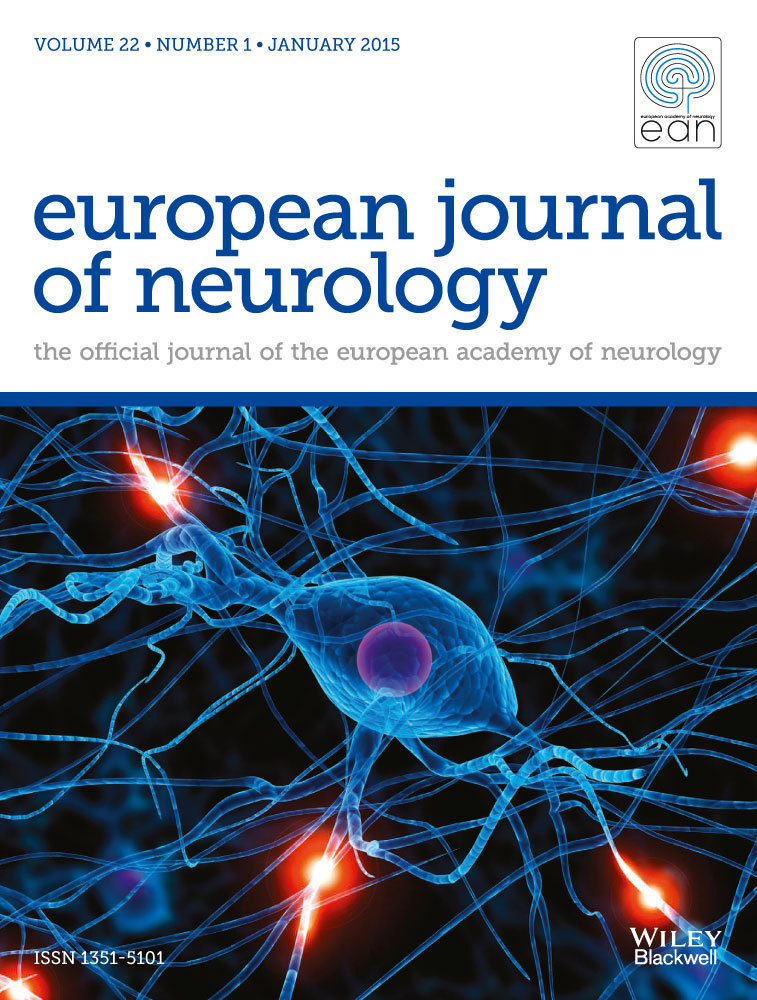‘Knock down the brain’: a nonlinear analysis of electroencephalography to study the effects of sub‐concussion in boxers
IF 4.5
2区 医学
Q1 CLINICAL NEUROLOGY
引用次数: 0
Abstract
Background and purposeBoxing is associated with a high risk of head injuries and increases the likelihood of chronic traumatic encephalopathy. This study explores the effects of sub‐concussive impacts on boxers by applying both linear and nonlinear analysis methods to electroencephalogram (EEG) data.MethodsTwenty‐one boxers were selected (mean ± SD, age 28.38 ± 5.5 years; weight 67.55 ± 8.90 kg; years of activity 6.76 ± 5.45; education 14.19 ± 3.08 years) and divided into ‘beginner’ and ‘advanced’ groups. The Montreal Cognitive Assessment and the Frontal Assessment Battery were administered; EEG data were collected in both eyes‐open (EO) and eyes‐closed (EC) conditions during resting states. Analyses of EEG data included normalized power spectral density (nPSD), power law exponent (PLE), detrended fluctuation analysis and multiscale entropy. Statistical analyses were used to compare the groups.ResultsSignificant differences in nPSD and PLE were observed between the beginner and advanced boxers, with advanced boxers showing decreased mean nPSD and PLE (nPSD 4–7 Hz,击倒大脑":对脑电图进行非线性分析以研究拳击手亚震荡的影响
背景和目的拳击运动与头部受伤的高风险有关,并增加了慢性创伤性脑病的可能性。本研究通过对脑电图(EEG)数据采用线性和非线性分析方法,探讨亚撞击对拳击手的影响。方法选取 21 名拳击手(平均值 ± SD,年龄 28.38 ± 5.5 岁;体重 67.55 ± 8.90 千克;活动年限 6.76 ± 5.45;受教育年限 14.19 ± 3.08 年),分为 "初级 "组和 "高级 "组。研究人员进行了蒙特利尔认知评估和额叶评估测试,并收集了静息状态下睁眼(EO)和闭眼(EC)时的脑电图数据。脑电图数据分析包括归一化功率谱密度(nPSD)、幂律指数(PLE)、去趋势波动分析和多尺度熵。结果初学者和高级拳击手的 nPSD 和 PLE 存在显著差异,高级拳击手的 nPSD 和 PLE 平均值有所下降(nPSD 4-7 Hz,p = 0.013;8-13 Hz,p = 0.003;PLE 额叶 F3 EC,p = 0.010)。多尺度熵分析表明,高级拳击手低频熵增加,高频熵减少(F3 EC,p = 0.024;枕叶 O1 EO,p = 0.029;枕叶 O2 EO,p = 0.036)。结论脑电图数据的非线性分析表明,作为一种神经生理学生物标志物,它具有检测拳击运动员慢性创伤性脑病无症状阶段的潜力。这种方法有助于监测运动员的健康状况,降低未来在运动中发生神经损伤的风险。
本文章由计算机程序翻译,如有差异,请以英文原文为准。
求助全文
约1分钟内获得全文
求助全文
来源期刊

European Journal of Neurology
医学-临床神经学
CiteScore
9.70
自引率
2.00%
发文量
418
审稿时长
1 months
期刊介绍:
The European Journal of Neurology is the official journal of the European Academy of Neurology and covers all areas of clinical and basic research in neurology, including pre-clinical research of immediate translational value for new potential treatments. Emphasis is placed on major diseases of large clinical and socio-economic importance (dementia, stroke, epilepsy, headache, multiple sclerosis, movement disorders, and infectious diseases).
 求助内容:
求助内容: 应助结果提醒方式:
应助结果提醒方式:


